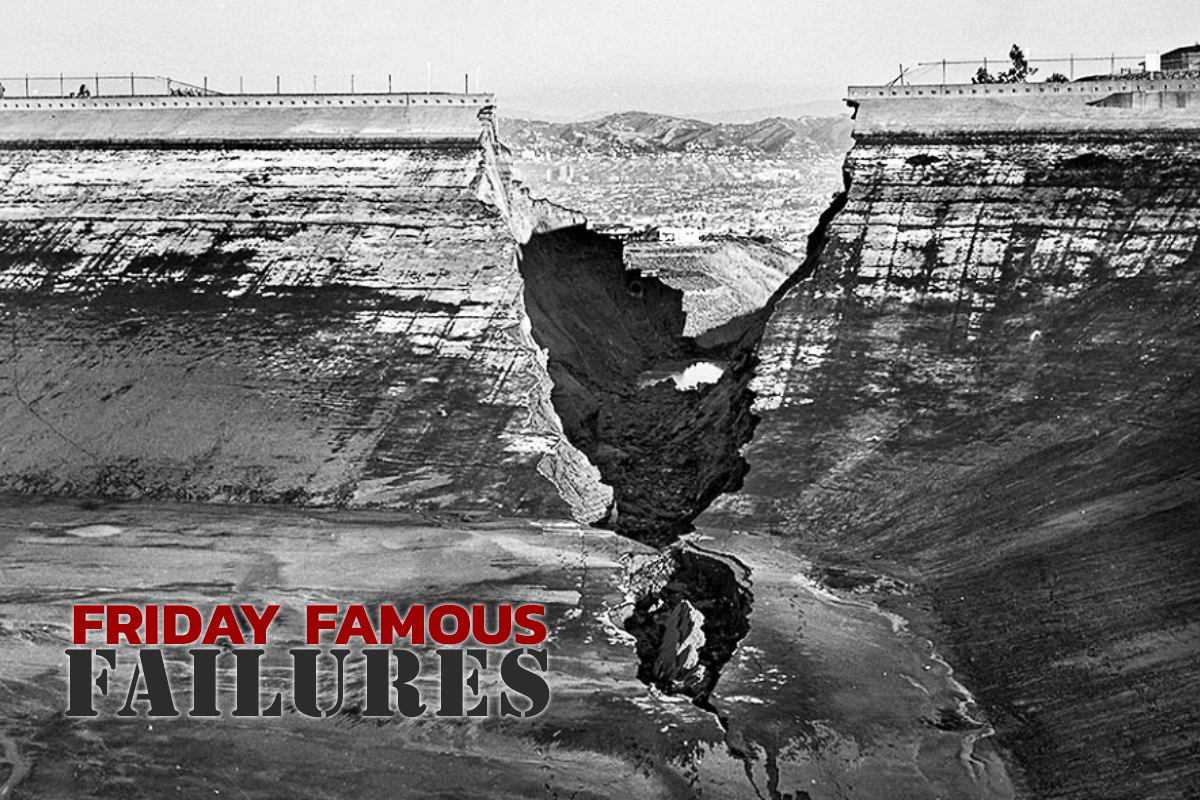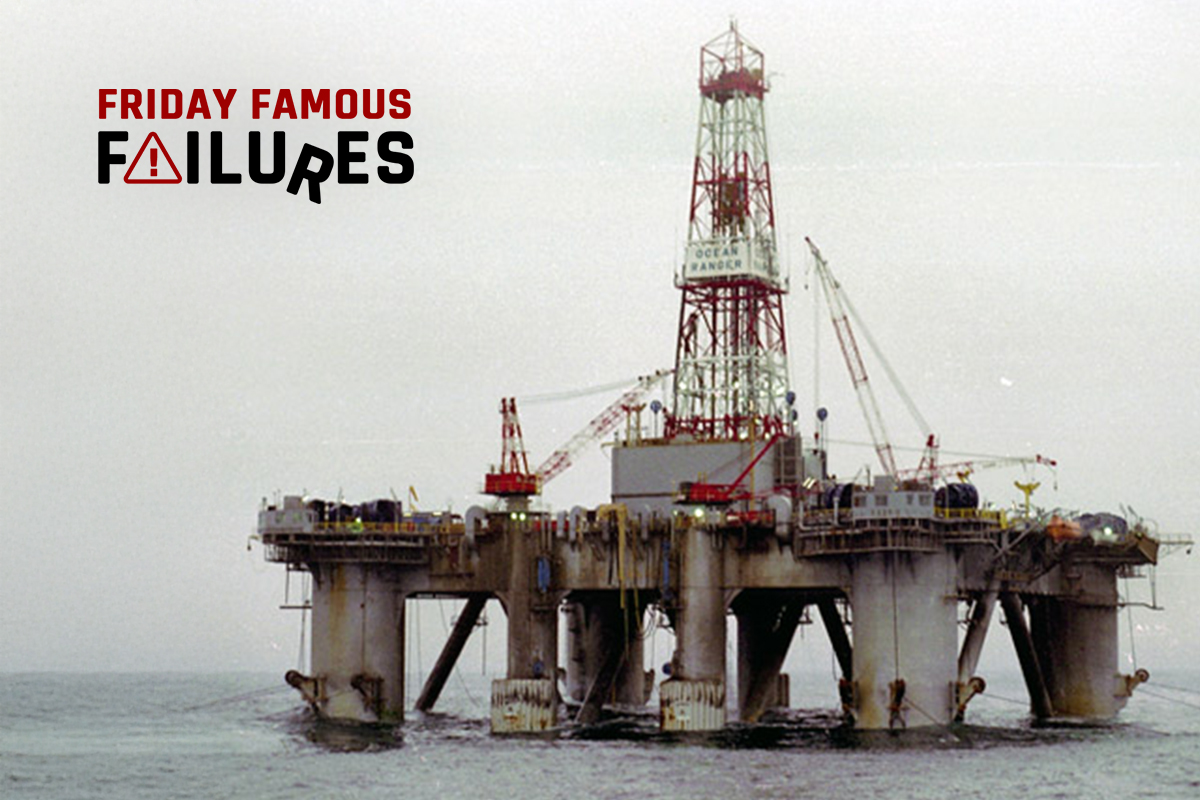Constructed during and immediately after World War II, the Baldwin Hills Reservoir was intended to provide a reserve supply of safe water for people living in the Los Angeles area in case of emergency. The dam, built between 1947 and 1951 by the Los Angeles Department of Water and Power, was inspected and validated by the California Department of Water Resources.
On 14 December 1963, however, signs of lining failure began showing in the dam, with water from the reservoir leaking through the dam’s east abutment. Within three hours, the dam was breached, releasing some 250 million gallons of water into nearby neighborhoods and destroying 277 homes. Rescue efforts during the dam breach saved many lives, and in total, the disaster only killed five people.
The failure in the dam itself occurred along a fault line in the area subsidiary to the well-known Newport-Inglewood fault, which had been considered during planning. What had gone wrong that caused the dam fail so catastrophically?
What caused this disaster?
Construction on a known fault line. Subsequent investigation of the disaster concluded that the earth under the dam had shifted or offset seven inches during the life of the reservoir due to the underlying fault. Later investigations also showed that the weight of the dam and reservoir had exacerbated the fault’s movement and was a significant factor in the disaster. Many of the engineers who worked on the project had concerns about building a reservoir considering the difficult geological conditions of the site, but were overruled by the designer, Ralph Proctor.
Subsidence caused by oil extraction near the reservoir. Years of oil extraction from the nearby Inglewood Oil Field had caused “subsidence” in the underlying geological strata, where geological structures shift due to voids created by the removal of oil deposits. This phenomenon had been understood by oil industry experts since the 1920s and was confirmed by a U.S. Geological Survey of the area completed in 1969. The subsidence had caused about 12 feet of “stretching” in the ground under the reservoir.
Destabilizing effect of oilfield injection. New technology at the time involved injecting water back into the oil field to improve the recovery of oil deposits, which caused hydraulic fracturing and increased ground movement along the nearby fault. This factor was confirmed by a geologist’s 1970 discovery of faulting, and surface seepage of oilfield waste brines along the fault that traversed the reservoir. It was likely that the geologic effects of oilfield injection were present even on the day of the disaster. An additional 2 inches of offset of earth under the reservoir was attributed to oilfield injection.
Use of compacted soil in construction. The original engineers who designed the dam did consider the fault line, and designed a compacted soil lining designed to prevent water seepage into the foundation, minimizing the effect of fault movement and reducing the structure’s vulnerability to the fault. Compacted soil used in this way was a preferred method of earth dam construction at the time, and the designer of the Baldwin Hills dam had pioneered many of the techniques required to create a compacted-earth dam lining. Recent analysis, however, showed that highly compacted but lightly confined soils tend to become very unstable when seepage is present. In the case of Baldwin hills, the instability caused by seepage from oilfield injection was also a significant cause of the dam failure.
Effects of the disaster
From the day of the disaster, the Baldwin Hills dam failure received a great deal of attention from the engineering community and continues to be studied today. Initial investigations were conducted to establish legal liability for the 277 homes destroyed in the flood caused by the sudden release of 250 million gallons of water.
The first major investigation that was completed was by the California Department of Water Resources, which had inspected and approved the dam after its construction. This investigation focused on the connections between the nearby Inglewood Oil Field and the dam failure and concluded only that “an unfortunate combination of physical factors” caused the dam failure.
The role of subsidence and oilfield injection was opposed by Standard Oil, the operator of the Inglewood Oil Field, as a corporate legal policy. But in 1976, the U.S. Geological Survey concluded that displacements on the surface near the Baldwin Hills dam and also ground surface cracking in the Stocker-LaBrea area southeast of the reservoir were “90 percent or more” caused by the exploitation of the Inglewood oil field. The survey also found that the ground surface movement and faulting that caused the Baldwin Hills dam failure were likely aggravated by oilfield injection with pressures exceeding hydraulic fracturing levels – which is to say, pressures significant enough to fracture the geological structures in the ground.
By the early 1970s, the legal issues had been settled out of court. However, the engineering issues continued to be investigated and explored in academic settings. At a prominent engineering conference at Purdue University in 1972, engineering teams presented varying analyses of the incident. Some argued that the oilfield exploitation nearby, which caused the ground subsidence and aggravated the fault movement underneath the dam, was the primary cause of the failure. Others argued that the siting of the dam on the fault, and the exacerbating effect of the heavy earthworks and reservoir on the fault itself, were the most significant factor of the disaster.
It wasn’t until 1986 that the differing investigation conclusions began to converge. After suspiciously similar failures of dams like that of the Baldwin Hills Reservoir in 1971 and 1976, most engineers now identify fault movement due to nearby oil extraction as the primary cause. Then, in 2001, two engineers studying soil-state mechanics identified that the compacted soil liner might have failed after being subjected to seepage caused by oilfield operations. Today, most engineers blame nearby oil extraction for making the ground unstable, shifting the underlying fault excessively, and causing failure of the reservoir liner through oilfield waste products.
The Baldwin Hills Reservoir area was repurposed as a community park, though recently there have been discharges of oilfield gases at the site. Some consider this to be the result of continued oilfield injection at the Inglewood and Stocker-LaBrea oil fields (Stocker-LaBrea is also nearby). There is also significant continued ground movement along the faults in the area, which some also attribute to oil field activity. However, the Plains Exploration and Production Company (PXP), the current operator of the oil fields, continues to assert that oil field activity does not affect fault movements, even as they continue to inject water – to aid in oil recovery – at pressures high enough to cause hydraulic fracturing of the geologic strata.









In the words of the late Paul Harvey, “If there is a 50-50 chance of something to go wrong, then 9 times out of 10 it will”.
Am an Ohio PE civil engineer, with 50 yrs of storm drainage design, including some huge culverts, dams and HUD Flood Studies. The record of dam failures are sprinkled throughout the 5,000 year historical record. Always best to overdesign drainage structures, and insist on routine inspection and maintenance. The Corps designs for Maximum Probable Precipitation for good reason.